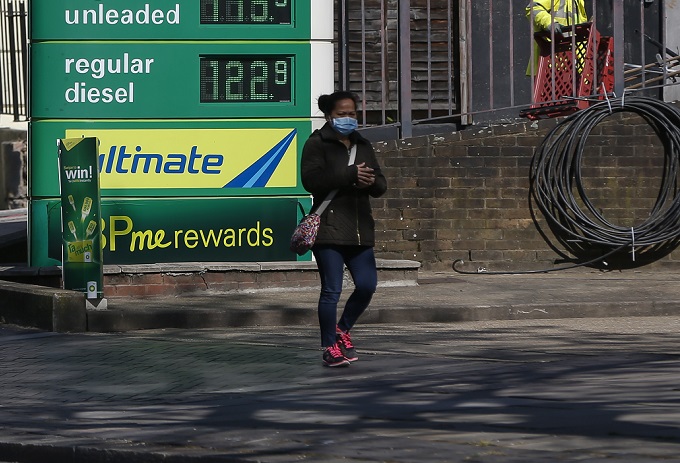Black adults 4 times more likely to die from coronavirus than whites in UK
Published : 07 May 2020, 22:31
Black adults are more than four times as likely to die from a COVID-19 related death than white people in Britain, according to a provisional analysis by the British Office for National Statistics (ONS) released Thursday.
When taking age into account, black males are 4.2 times more likely to die from deaths that are COVID-19 related and black females 4.3 times more likely than their white counterparts in the country, said the ONS.
The latest figures were published by the ONS one day after Britain became the first country in Europe to pass 30,000 confirmed coronavirus deaths. A total of 30,615 people have died in hospitals, care homes and the wider community after testing positive for the virus, according to the latest official figures released Thursday.
VULNERABLE MINORITY
Data published by the ONS found that ethnic minority groups were more vulnerable to COVID-19. Researchers said the difference in virus mortality is partly due to socio-economic disadvantages and other circumstances.
Shadow Justice Secretary David Lammy responded to the figures by calling for an urgent investigation into the disproportionate number of deaths.
"It is urgent the causes of this disproportionality are investigated," he tweeted. "Action must be taken to protect black men and women -- as well as people from all backgrounds -- from the virus."
The ONS report shows people of Bangladeshi, Pakistani, Indian and mixed ethnicity had statistically significant raised risk of death compared with the white population amid the COVID-19 pandemic.
The figures, which were adjusted for age, suggest that people from all ethnic minority groups -- except women with Chinese ethnicity -- are at greater risk of dying from the disease than white groups.
The ONS analysts also found that men of Bangladeshi/Pakistani ethnicity were 3.6 times more likely to die with the virus than white men, with the equivalent figure for Bangladeshi/Pakistani females set at 3.4.
Men of Indian ethnicity were found to be 2.4 times more likely to die from COVID-19 than white men, while the figure for women of Indian ethnicity is slightly higher, at 2.7.
For people of Chinese ethnicity, the team found an increased risk among men but not women: men were 1.9 times more likely to die from COVID-19, while the figure for women was 1.2.
The ONS used data on death registrations up to April 17, combined with 2011 Census records, to model the impact of the virus on different ethnic groups. It also looked at COVID-19 deaths between March 2 and April 10 in England.
COMPLEX ISSUE
Commenting on the findings, Tim Elwell-Sutton, assistant director of strategic partnerships at the Health Foundation, said, "This is a complex issue and the exact reasons why black and minority ethnic groups are being disproportionately impacted by the virus are still unknown but existing social inequalities and structural discrimination in British society are likely to be playing a significant role," the London-based Evening Standard newspaper reported.
"Today's data shows some of the impact of socioeconomic disadvantage, as well as region and health status, but even after taking these things into account, black and minority ethnic groups are still at higher risk," he was quoted as saying.
"Some black and minority ethnic groups are more likely to have existing health conditions compared to the white population and may therefore be more likely to experience worse symptoms if they become infected with the virus," he told the newspaper.
Meanwhile, a spokesperson for the Department of Health and Social Care also commented on the data. "We're aware that this virus has sadly appeared to have a disproportionate effect on people from BAME (Black, Asian, and minority ethnic) backgrounds," the spokesperson said.
"It is critical we find out which groups are most at risk so we can take the right steps to protect them and minimise their risk," said the spokesperson.
UNEXPLAINED REASONS
As ethnicity is not recorded on death certificates, the ONS used the data linked to the 2011 Census which included self-reported ethnicity.
The ONS said that the report has suggested that the difference between death risks among various ethnic groups is partly due to socio-economic disadvantage and other circumstances, but some of the reasons remain unexplained.
According to the ONS, once further factors were taken into account, including socio-demographic and self-reported health and disability factors, the differences between black and white people narrowed but were still stark.
The risk of a COVID-19-related death for black men and women was then 1.9 times more likely than the white population. Men in the Bangladeshi and Pakistani ethnic group were 1.8 times more likely to have a COVID-19-related death than white males, with the figure being 1.6 times for women.
The ONS acknowledged that because its analysis of population characteristics was linked to the 2011 Census, it may not accurately reflect the current circumstances in 2020. The differences in the risk of dying with the virus could be driven by factors not included in its model, it said.
Meanwhile, some ethnic groups may be over-represented in public-facing occupations and could be more likely to be infected by the disease, it said. For example, individuals in the Bangladeshi and Pakistani ethnic group are more likely to work as transport operatives than those in any other ethnic group, it added.
The ONS said it plans to conduct further work to identify occupations that are particularly at risk.


